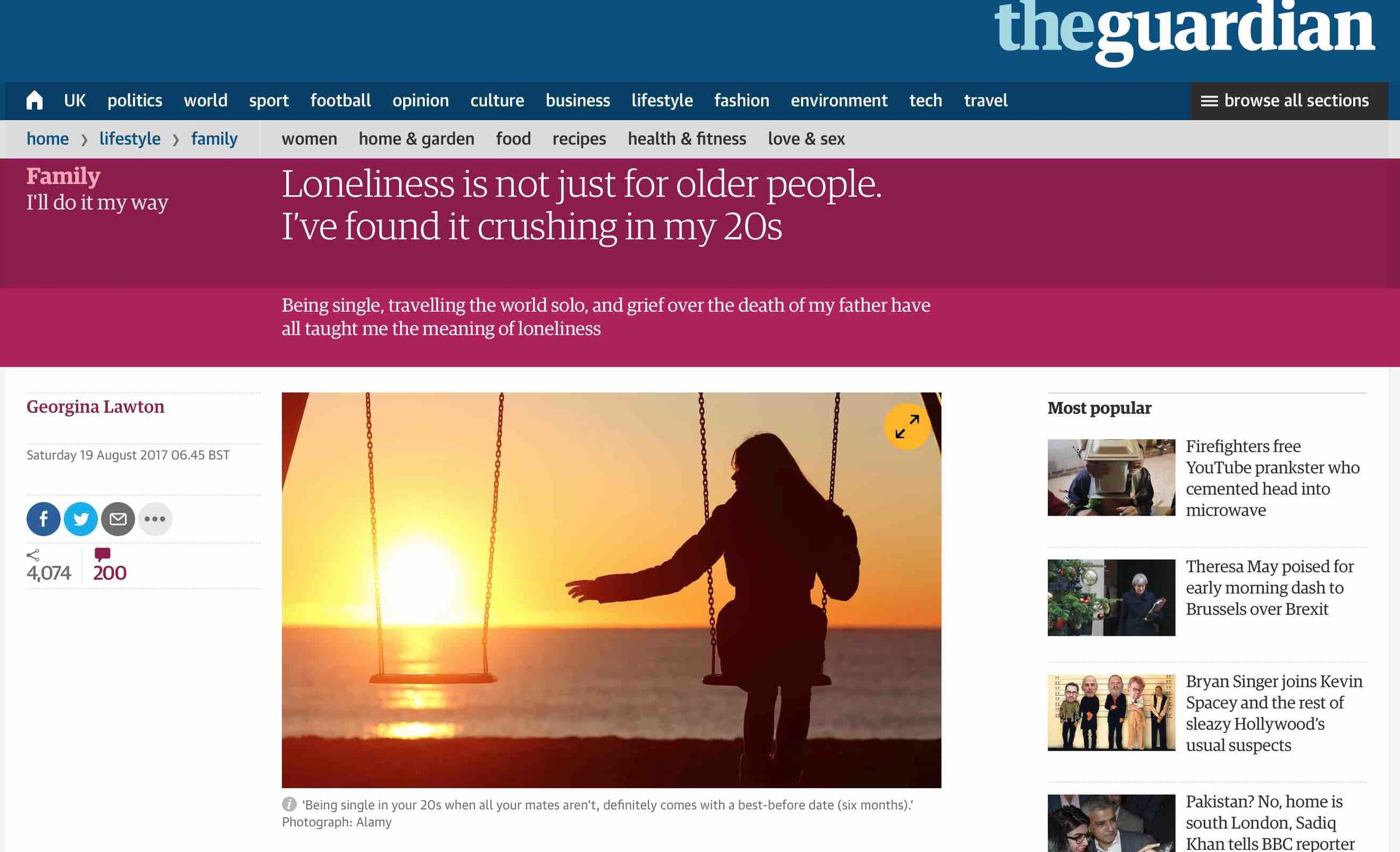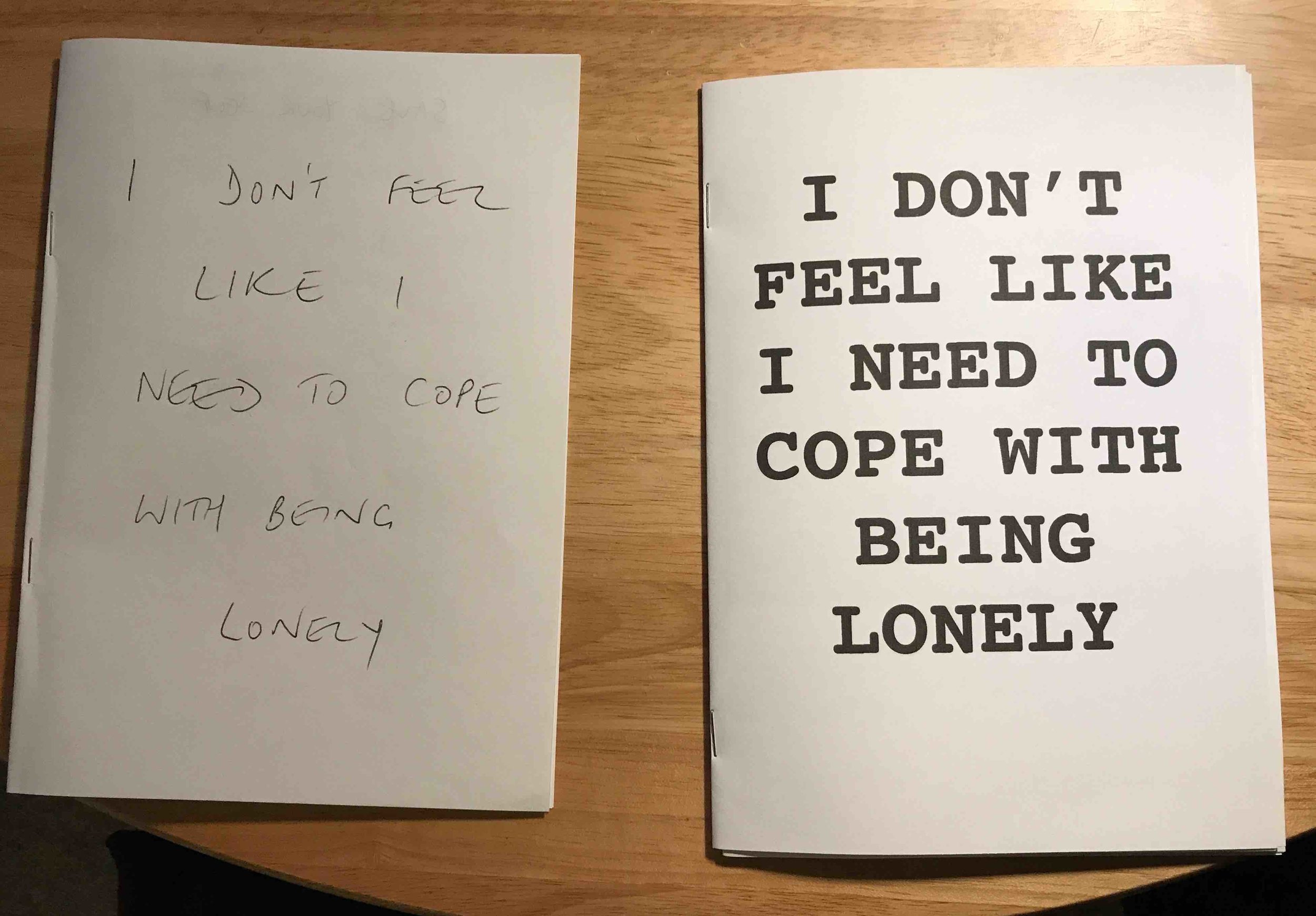One of the key aims of this project has been to stimulate dialogue about the issue of solitude and hopefully contribute towards a more open communication about this difficult topic.
This aim underpinned the decision to hold an exhibition in a gallery, as one of the intended consequences would be to bring people together in the same place for a shared experience and hopefully some discourse about the issues explored in the work.
During the MA and particularly leading up to the completion of this FMP I have made largely unsuccessful attempts to provoke discussion about the issues on social media. Aside from the occasional comment agreeing that it’s a topic worthy of examination, it has been difficult to get people to participate in any meaningful way or to volunteer to talk about things more deeply in a more private setting.
I was thus hoping that by bringing the audience into a physical space there may be opportunities to engage with them in a more immediate way than had been possible via social media.
Another aim of the project had been to produce an online space that would allow the work to be explored in more detail, and that will hopefully continue to evolve into a richer and deeper resource as the project continues after the MA as the scope of the work naturally broadens. I thus created a project website, which launched the day before the opening of the exhibition. In another CRJ post I will outline how this site developed and the response it has had so far.
ROITD Project Website
As the exhibition was only of short duration I felt it was important to try and maximise its impact as much as possible. This would be partly achieved by it being supported and accompanied by the material on the website. The location of studio1.1, in a busy and traditionally creative part of East London also helped in this regard. I had preceded the show with an Instagram poll asking what solitude meant to the viewer and received only a few responses. However, I posed a similar question to exhibition visitors and placed comment cards to allow anonymous responses to this question.
Comment box placed at the front of the exhibition
Once the exhibition was finished I was delighted to find that in the two days the show was open there had been a really encouraging response to this very broad question. I received a number of intriguing answers and what was reinforced is that these experiences are not easily generalised, as everyone experiences being alone differently.
If forced to organise these responses, I would say that they fell into two main categories – those who value the opportunity to connect with themselves, and those who are silently battling against unwanted isolation while maintaining an external façade that all is well.
Comment cards collected during the exhibition
Another benefit of holding an exhibition was the opportunity to get into conversation with visitors. It was so heartening when a passer by stopped in, spent some time looking at the work and then unprompted volunteered that they felt this was an important topic that needed to be more frequently discussed, and then went on to share personal experiences or reflections on solitude and loneliness. This happened on many occasions over the two days and was the definite highlight of the exhibition for me.
This validated a number of ideas: that it is an important issue that merits exploration, that more people than is immediately evident are experiencing (suffering?) this in silence and that it would therefore be a desirable objective to try and stimulate a more open and inclusive conversation about it. Having seen the sequelae of loneliness in a medical context for many years, mainly in older people, it was illuminating to have clear evidence that this issue affects younger people of varying demographic profiles also and this was reflected in the conversations I had with visitors over the two days.
Another element of the work that was validated during the two days was that of the visual approach taken in this project. I’ve written previously about narrative and how I’ve struggled to find a way to tell stories visually. I have spent a lot of time looking at the work of Crewdson, Soth and Hido in particular during the latter part of this MA and this research, as well as having a revelation while attending the London Nights exhibition earlier in the year about how using a series of images together could be an effective way to suggest a story, I had been convinced that this would be the way to create narrative in this work.
As I had continued to reflect on this and also realised the importance of including people in the work, I’d settled on triptychs as the vehicle to tell this particular story, each anchored by a portrait. In the exhibition I also experimented with combining triptychs to create even larger stories. It was really interesting then to see how visitors responded to these series of images. The various interpretations of the image combinations, particularly those that were presented in a group of 6 images, were really interesting – people finding all sorts of different elements, which were on the whole very different from my nominal intention when grouping the images together. This is exactly what I’d been aiming for. It did mean though that a number of visitors were frustrated when, after asking me to tell them whether they had gotten the ‘right answer’ when trying to interpret the images I replied by telling them that there wasn’t a right answer and that the fact they’d arrived at a completely different interpretation to myself, or another viewer, was exactly what I’d intended!
Holding the exhibition therefore served to allow direct engagement with the audience, in a way that had not been previously possible via social media. The accompanying website definitely worked in conjunction with the exhibition to provide different ways to access the work and explore it in depth at a time that suited the viewer. The exhibition also provided direct feedback about the success or otherwise of the work in communicating the themes and achieving the aims of emotionality and open-ended narrative. Judging from the verbal and written feedback received during the show, I am reassured that these objectives were largely met and this is very encouraging when considering how to take this project forward after the finish of the MA course.
I was asked on a couple of occasions during the exhibition – ‘what’s next?’ – whatever the answer to this question, this exhibition assures me that the work is on the right course.












